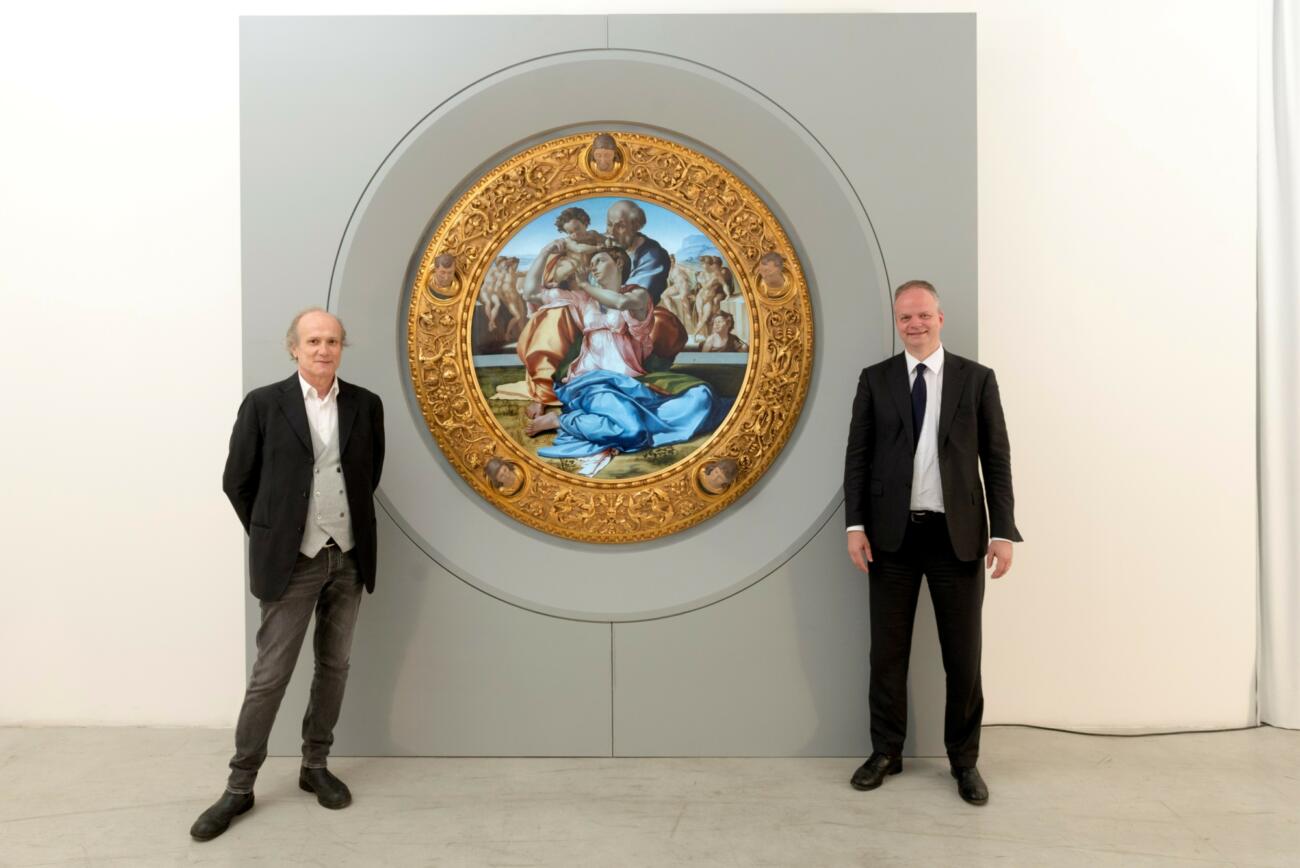Insights

NFTs are attracting a new generation of visitors
Image credit: Franco Losi, co-founder of Cinello (left), poses in front of Michelangelo's Tondo Doni. On the right Eike Schmidt, director of the Uffizi Museum in Florence (CINELLO PRESS OFFICE / UFFIZI GALLERIES)
Non-Fungible Tokens: Part 3 - Q&A with Dr Eike Schmidt, Uffizi Gallery
In the third in our series on NFTs, the Stonehage Fleming Art Management team catches up with Dr Eike Schmidt, Director of the Uffizi Gallery in Florence.
SFAM: How did the Uffizi utilise technology to engage with audiences during the pandemic?
ES: We decided that if we couldn’t bring the people to the museum, we would bring the museum to the people and rapidly expanded our online presence. We signed up for Facebook the day after Italy’s lockdown and today we are among the pioneers in digital art education – harnessing the power of all the leading social media networks.
SFAM: How did NFTs help you recoup losses incurred due to the pandemic?
ES: We converted some of the gallery’s best-known artworks into NFTs to sell to digital-savvy lovers of old masters and crypto enthusiasts. We teamed up with Italian company, Cinello, who produce digital artworks, or DAWs - detailed digital replicas of famous works. They maintain the original dimensions, are strictly limited in production, secured against theft and are accompanied by an NFT and a certificate of authenticity.
Our first encrypted work was Michelangelo's Doni Tondo , one of the most important Old Masters on display at the Uffizi. It sold for €140,000. The buyer enjoys looking at the digital version of the masterpiece on a screen and the painting can be transported anywhere, without the associated costs or fear of damage.
In 2020, the number of visitors to the Uffizi crashed from 4.4m to 1.2m as lockdowns repeatedly shut down cultural life and tourism in Italy. Social media platforms such as Facebook, Instagram and TikTok enabled us to reach a much younger demographic. Through short videos featuring pop songs, Old Masters were captured and staged in way that appealed to Gen-Z via the @uffiziegalleries channel. Our approach to grow our audience was a success. Now, on some days, almost 50 per cent of our visitors are under the age of 25.
SFAM: Are other museums doing the same?
ES: There seems to be a growing trend. The National Museum in Liverpool created an NFT project, the Whithworth Art Gallery in Manchester tokenised William Blake’s The Ancient of Days. Russia’s State Hermitage Museum announced its plan to sell NFTs of masterpieces from their collection and the Los Angeles County Museum of Art is planning a series on NFTs.
SFAM: Are NFTs a fad?
ES: Some art purists consider NFTs to be crypto toys for investors and are likely to be appalled at the prospect of digitalised Old Masters. The level of support that digitalisation can bring to museums, however, should not be underestimated. In the 19th century, printmaking advanced significantly when artists started using the latest technology, printing editions on metal plates to monetize their work. Since the development of photography, video and digital formats, artists using technology has continued to accelerate. History has taught us not to dismiss NFTs as hype. I believe the medium is here to stay and is already changing the way people look at art.
Find out more about Stonehage Fleming's Art Management offering